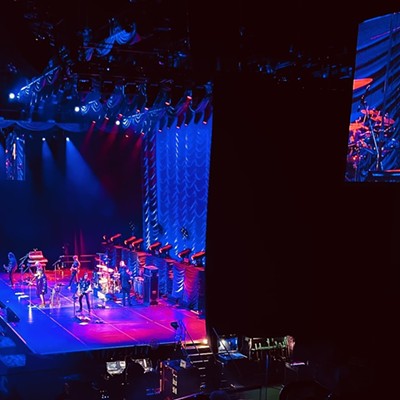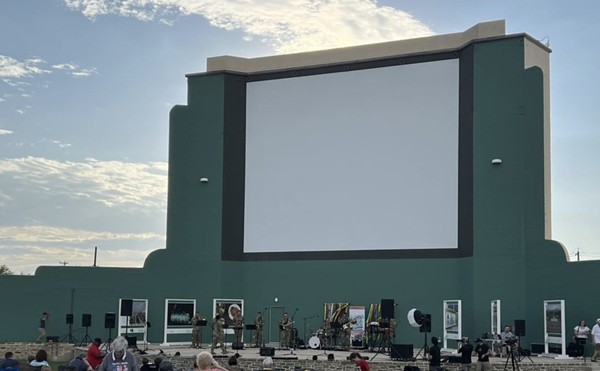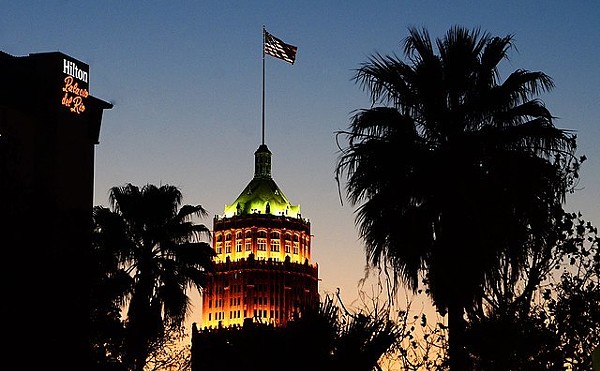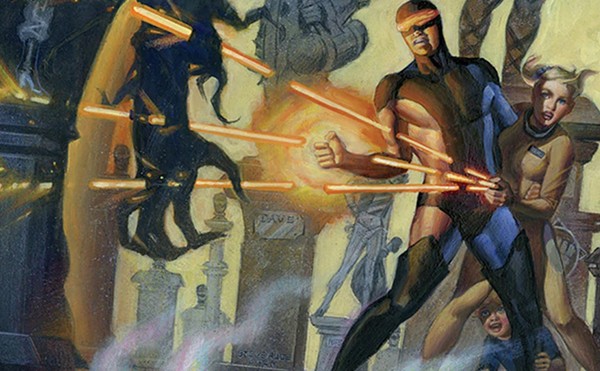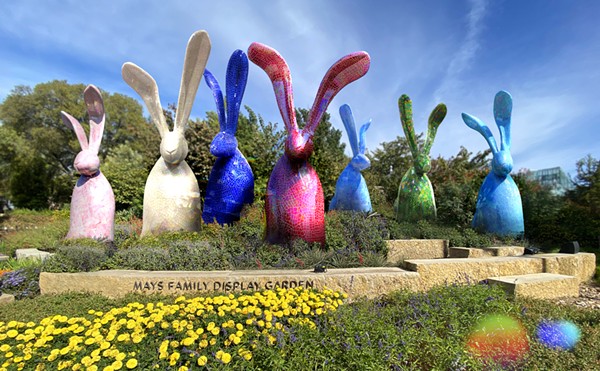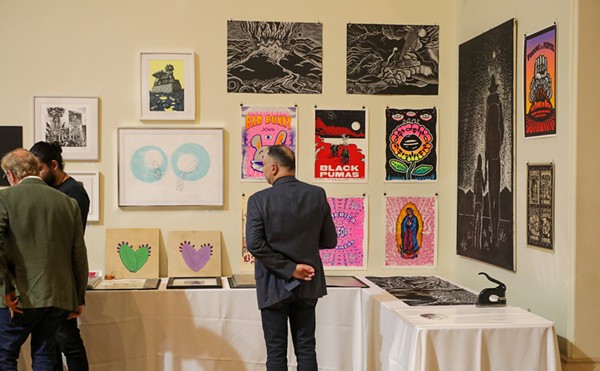Latin American Posters: Public Aesthetics and Mass Politics, on view at the Museo Alameda through June 29, is a dynamic assortment of works on paper, dating from the mid-20th century to the present, featuring an enlightening visual review of Latin-American political history during a time of major change and controversy.
In 1983, Eduardo Munoz Bachs created a seriegraph on paper to promote the Fifth International Festival of New Latin American Film in Cuba. This visually captivating work depicts a row of tall buildings against an olive-green background. The paper itself is outlined in magenta. A fanciful stem or beanstalk form emerges from behind the skyscrapers, boasting petals of orange, pink, and brown. Out of the center grows a black-and-white film reel that curls and twists like a fern. At the top of the page, these words are printed in bold orange text: “5to Festival Internacional del Nuevo Cine Latinoamericano / La Habana 83.” The attractive colors and cartoon-like quality of the drawing suggest a tone of optimism. The growing role of culture in society, especially through the medium of film, is a dominant theme in the show.
An offset lithograph on paper calls to mind the comic-book imagery of Roy Lichtenstein. In ben-day dots of primary colors, a farmer is depicted wearing a straw hat and work shirt with sleeves rolled up and holding a machete over one shoulder. Capital letters spell out the command, “Compadre, los ojos bien abiertos para defender nuestra tierra!” The title of this work by Jesus Ruiz Durand, completed in 1970, translates to “Brother, Keep Your Eyes Wide Open in Order to Defend Our Land.” This attitude of solidarity and brotherhood is evident throughout the exhibition.
Taller de Grafica Experimental of Nicaragua presents a poster that expresses the need to embrace change, as well as the growing feminist ideology in late-20th-century Latin America. In this offset lithograph from 1981, a crudely drawn woman in a headscarf looks up to the sky and holds a basket of berries. Bold text proclaims, “Construyendo la patria nueva hacemos la mujer nueva,” “In Constructing the New Nation We Create the New Woman.” At the bottom of the page are the words “Asociacion de Mujeres Nicaraguenses Luisa Amanda Espinoza.” Nicaraguan women were joining together to encourage reform and improve the future of their country.
A desire for idependence and self-sufficiency is evident in much of the work in this exhibition, even to the point of hostility and violence. One poster, made in 1971 by Aaron Gamaliel Ramos of Puerto Rico, sums up that country’s disgust with the intrusion of visitors. It depicts a black-tie-clad waiter, a towel draped over one arm as if poised to serve, who in one hand clutches a flaming bottle. “Para el turista tu eres Puerto Rico” is emblazoned across a forest-green background. “Tourist, We Have Something For You” is the official translation, though the threatening image renders a seemingly innocuous statement most terrifying.
For viewers who are unfamiliar with the political context in which these works were created, a lithograph by Claes Oldenburg and Coosje van Bruggen provides some historical context. It reproduces the entire text of a document written in January 1984, and is entitled “Artists Call Against United States Intervention in Central America.” This statement denounces the presence of American troops in Latin America during the Reagan administration, and outlines a number of abuses allegedly perpetrated by our government at that time.
The works described above succeed in conveying the true mission of this show, which is to demonstrate the ways in which political views were expressed through artistic techniques. Lithography in particular is effective at accomplishing these goals, because it is both a form of fine art and mass media. Each poster in this exhibition is visually arresting, and makes a strong statement of opinion or instruction.
Latin American Posters:
Public Aesthetics and Mass Politics
10am-6pm Tue, Thu-Sat
noon-6pm Sun
10am-8pm Wed
Through June 29
$2-4
Museo Alameda
101 S. Santa Rosa
(210) 299-4300



